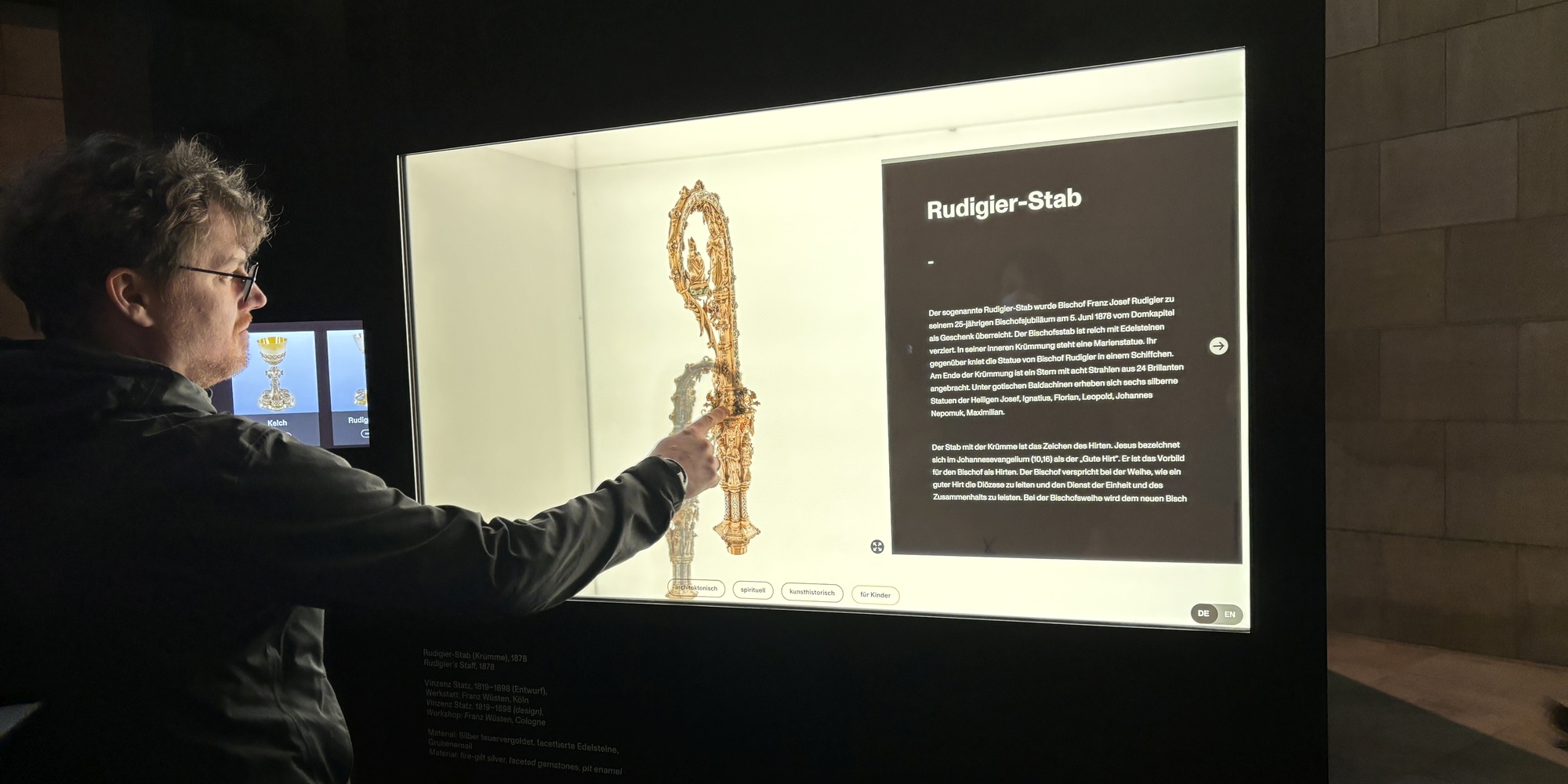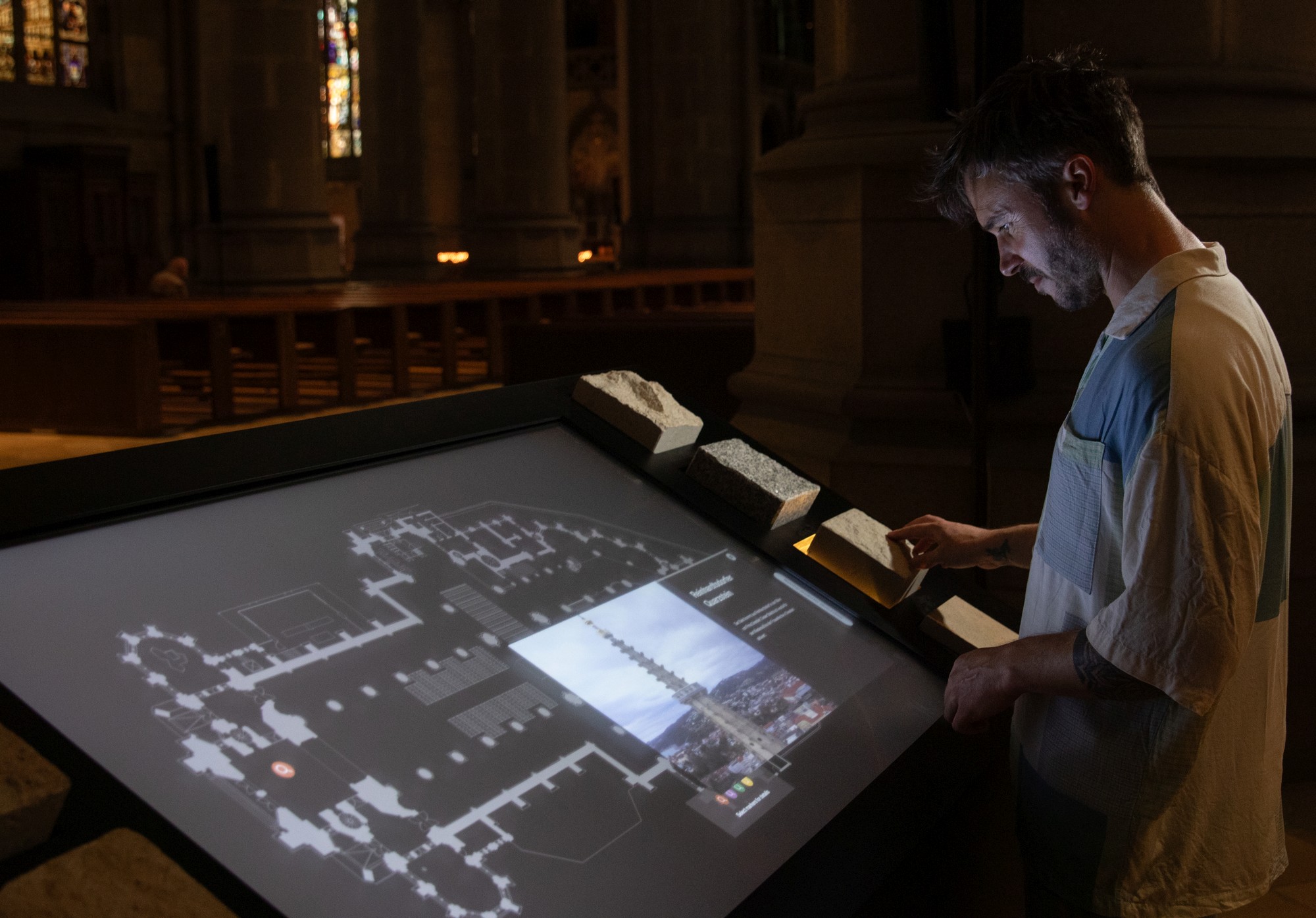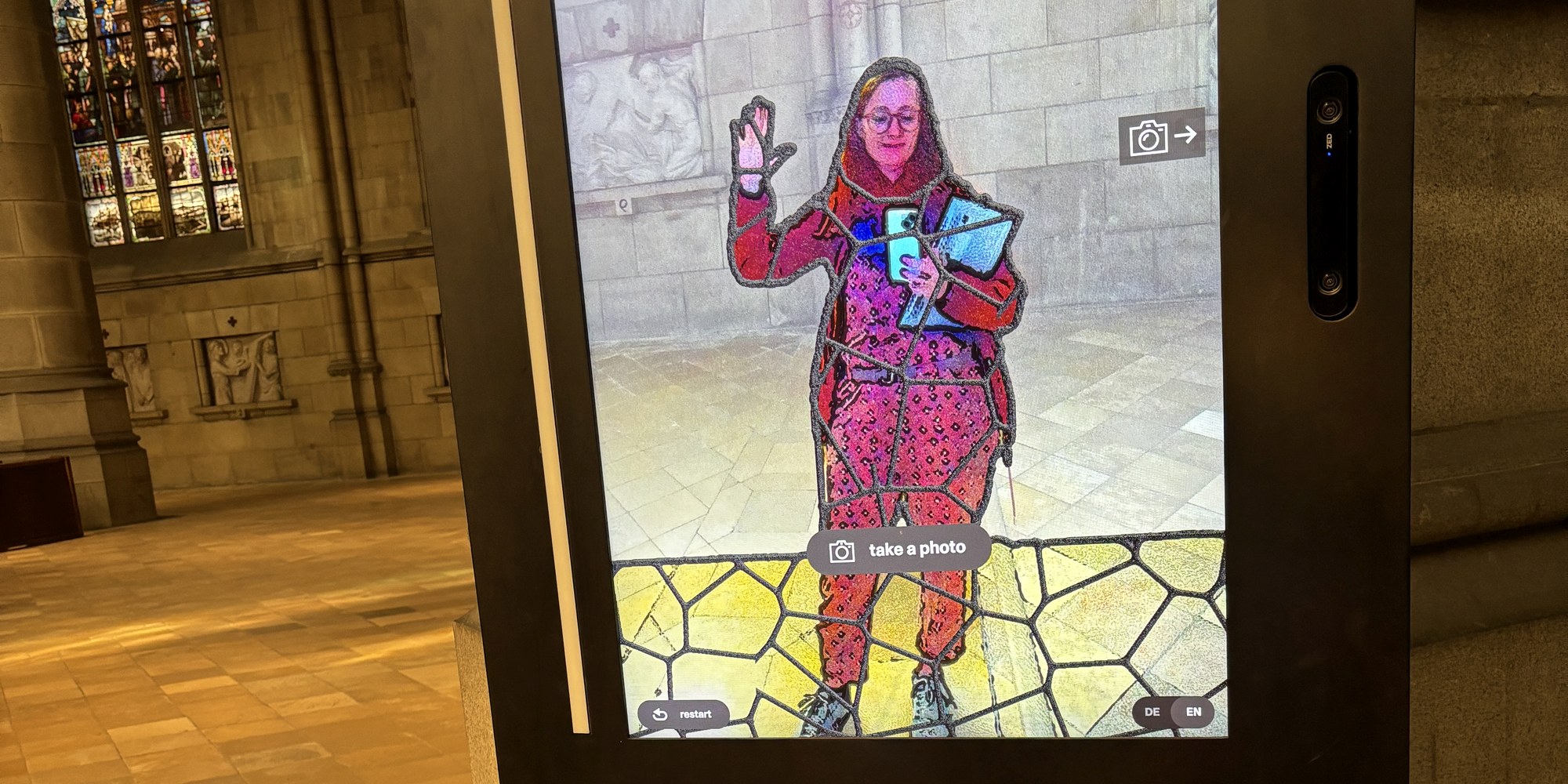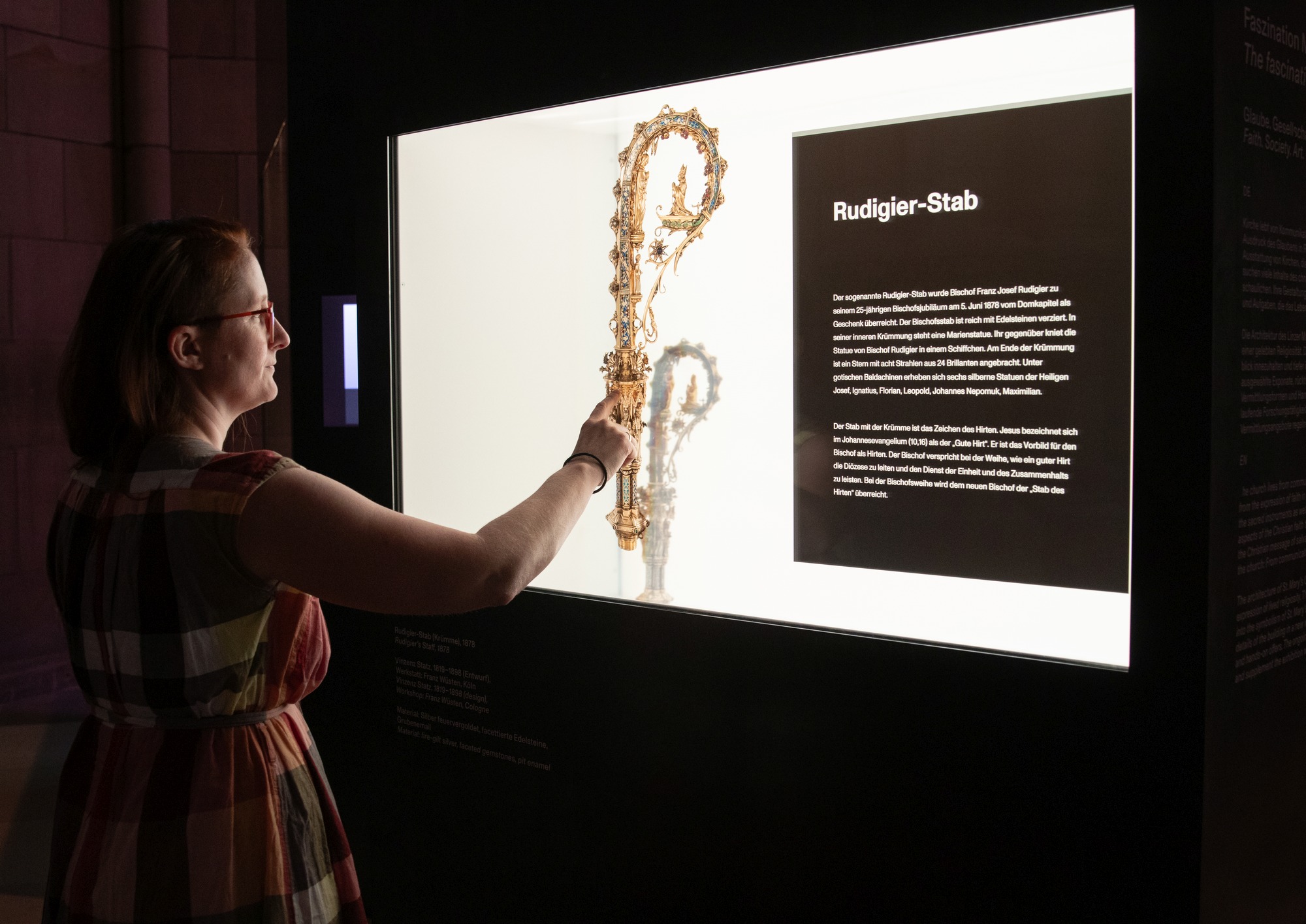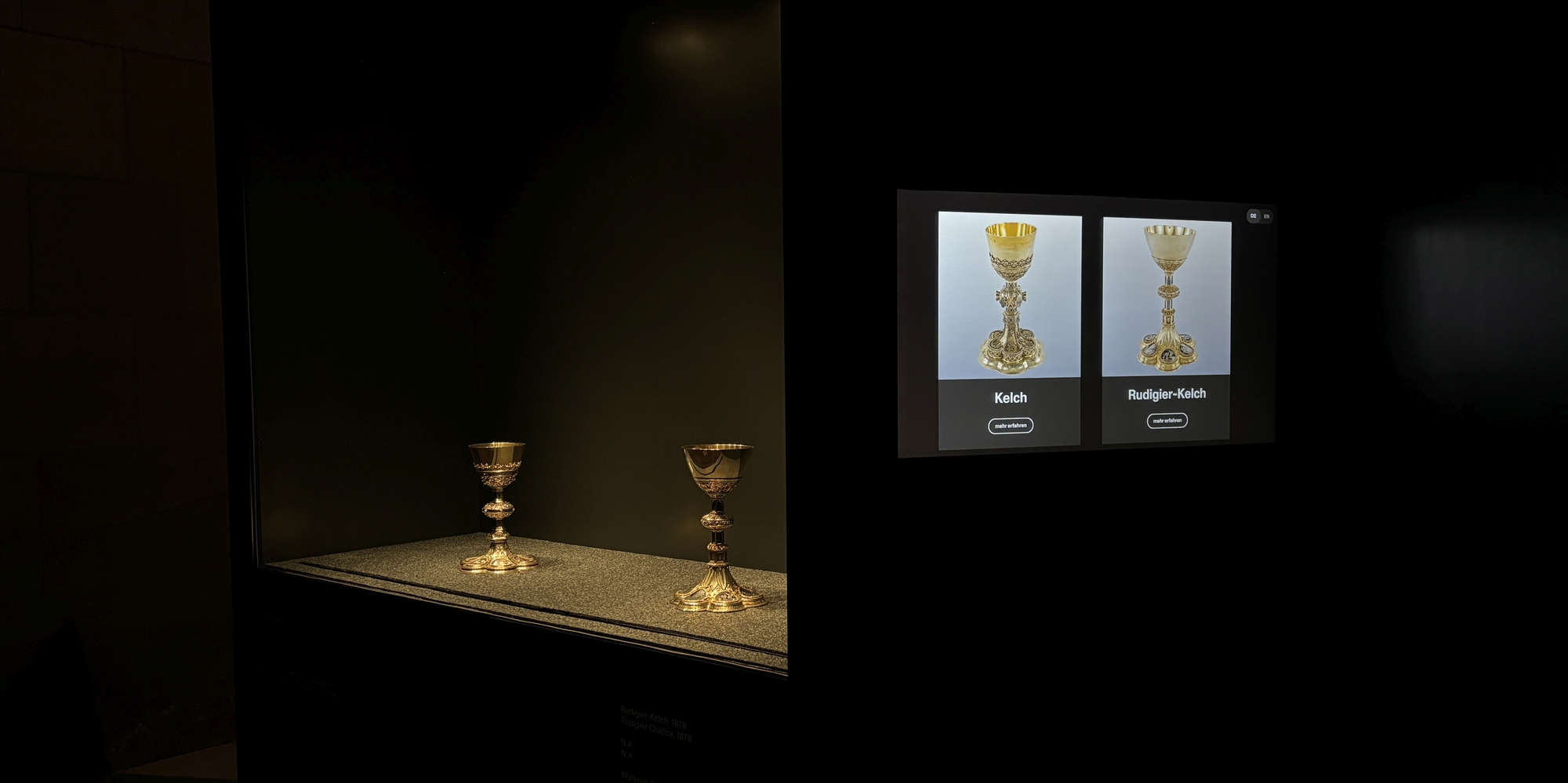The New Cathedral (Mariendom) in Linz celebrated its centenary in 2024 with a large-scale digitization project and a new visitor center including a multimedia exhibition. Here, digitally enhanced showcases for sacred objects and gigapixel images of the cathedral windows await visitors, who can even populate the cathedral digitally with their portraits.
The digitization of the New Cathedral ensures the preservation and documentation for future generations and at the same time makes it accessible to the public barrier-free: the exhibition developed by the Diocese of Linz and the Ars Electronica Futurelab offers numerous new perspectives on cultural heritage as well as interactive elements.
The New Cathedral was officially opened in April 1924 after 62 years of construction – 100 years later, the DomCenter was built at Domplatz 1 and opened with a celebration on April 27 and 28. The extension serves as a new meeting place and starting point for exploring the Cathedral of the Immaculate Conception. The content of the new exhibitions, implemented by the Ars Electronica Futurelab, is based on the large-scale digitization project, which was developed in collaboration with the Austrian Academy of Sciences. The aim is to preserve information about this cultural asset and communicate it in a variety of ways.
Exploring digital treasures
In the course of the digitization process, high-resolution images, so-called gigapixel images, of the cathedral windows were taken, objects from the cathedral treasury were recorded three-dimensionally and original historical documents, such as architectural plans and design drawings of the stained-glass windows, were digitized. In order to make these digital copies accessible to the general public, the cathedral has developed a special exhibition together with the Ars Electronica Futurelab. For example, visitors can look forward to object showcases that have been digitally enhanced using touchscreens. The objects can be digitally rotated and enlarged to reveal previously hidden details.
The digitized version of the stained glass windows in the high choir, which were designed to be viewed from a distance, also offers the possibility of a closer look. Visitors can even become part of one of the windows themselves at a photo station and leave their portraits virtually in the cathedral. All these digital enhancements are intended to enable a change of perspective and encourage both liturgy experts and those interested in art and culture to engage with the central content of the cathedral.
Credits
Ars Electronica Futurelab: Alexandre Bizri, Kerstin Blätterbinder, Manuel Dobusch, Marianne Eisl, Otto Naderer, Erwin Reitböck, Simon Schmid
PARTNER: Digilithic (Dominik Juchum)
